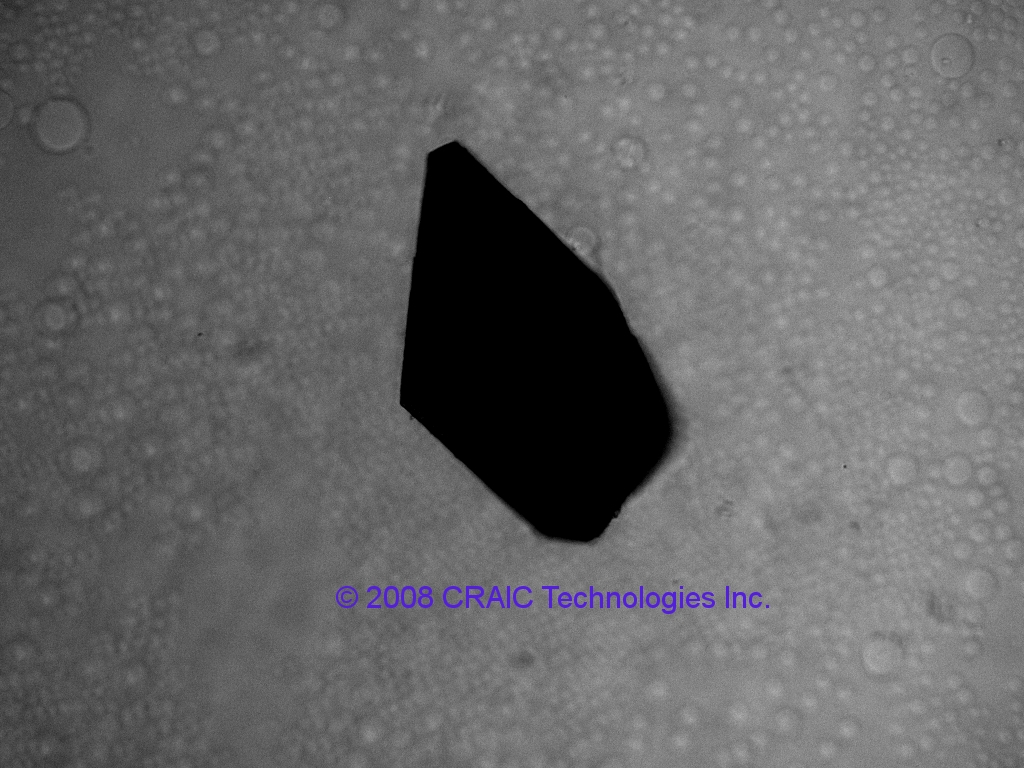DNA Crystal

Ultraviolet absorbance image of a biocrystal in solution
Science of Microspectrophotometers
Ultraviolet Absorbance Microscope
Ultraviolet Absorbance Microspectrophotometer
Deoxyribonucleic acid (DNA) is an essential part of living beings. It is a long chain of nucleotides that contains genetic blueprints used in the growth and functioning of known lifeforms and some viruses. Structurally, it consists of two long chains of nucleotides that form the two nucleic acids. These nucleic acids then intertwine with one another to form the famed double helix.
DNA crystals are grown so that their three dimensional structures may be studied by x-ray diffraction. An even more exciting application is using DNA crystals and the growth of DNA crystals for computing. This is just one of the most promising applications of nanotechnology in which DNA is a building block for well defined nanostructures.
Optical Properties
The nucleotides in DNA absorb ultraviolet light, generally from 250 to 270 nm. Fluorescence is not a viable analytical technique. Therefore, most DNA crystals are analyzed by their UV absorption at 260 nm. UV microscopes and UV microspectro-photometers are used to analyze individual DNA crystals both in solution and after being extracted. Microspectrophotometers can even be used to determine the concentration of DNA within the crystal and the DNA crystal purity. As protein often contaminates DNA samples, DNA purity is measured by comparing the absorbance intensity at 260 nm versus that at 280 nm. A ratio of about 1.8 is considered "pure" for DNA. Lower ratios indicate the presence of protein.

